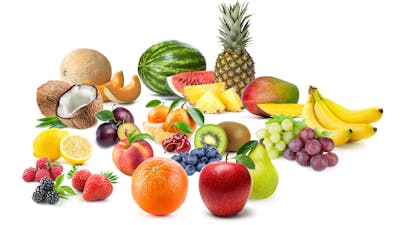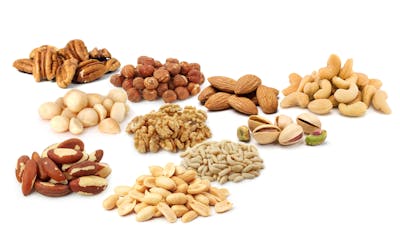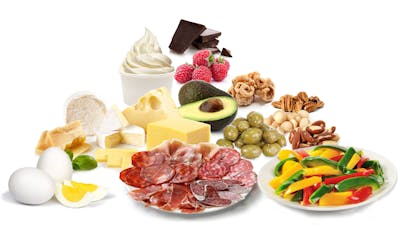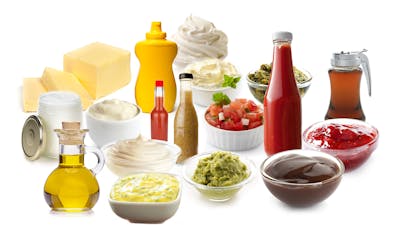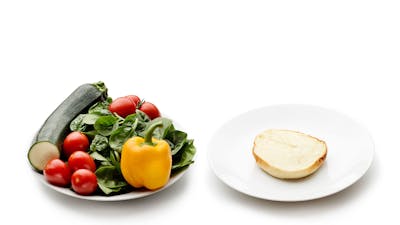Recipes FAQ
- Where can I find the nutritional information for your recipes?
- Why are there moderate and liberal recipes with fewer carbs per serving than in some keto recipes?
- Where can I find the number of calories for each recipe?
- Can I combine a vegetarian or vegan diet with a keto diet?
- I don’t like/can’t eat a certain ingredient, can I substitute it for something else?
- What can I use to substitute dairy in a recipe?
- Why do some of your dairy-free recipes list butter in the ingredients?
- Why do you limit the use of sweeteners in your recipes?
- Do your recipes show net carbs or total carbs?
- What is your nutritional information based on?
- Why are most of your side dishes marked as moderate or liberal low carb and not keto?
If you want to learn more about our thoughts on different ingredients, please see our food policy.
1.Where can I find the nutritional information for your recipes?
In all recipes we have a section called “Nutrition.” It’s located directly underneath the ingredients. Click the plus sign and you will find the amount of carbs, protein, and fat in percentage and in grams per serving. There you’ll also find the number of calories per serving. Note: The net carb information for our recipes is available to everyone. The protein, fat, and calorie information for our recipes is a member benefit.
2. Why are there moderate and liberal recipes with fewer carbs per serving than in some keto recipes?
Here’s how we define different levels of low carb at Diet Doctor:
- Ketogenic low carb <20 gram net carbs per day.1This level of carbohydrates is defined as below 4 energy percent (E%) carbs in our recipes or, if it is a meal, 7 grams of carbs or less.2 In our ketogenic recipes the amount of carbs per serving is shown in green balls.
- Moderate low carb 20-50 net grams per day. This level is defined as between 4-10 E% carbs in our recipes and the amount of carbs per serving is shown in yellow balls.
- Liberal low carb 50-100 net grams per day. This means 10-20 E% carbs in our recipes and the amount of carbs per serving is shown in orange balls.
Because the levels are defined by percentage, you can sometimes find a small serving of a liberal recipe with fewer carbs per serving than a large serving of a keto recipe.
Please see our guide How low carb is low carb? to learn more about our categories.
3. Where can I find the number of calories for each recipe?
All nutritional information, including calories per serving, can be found in the section underneath the ingredients in all recipes.
If your aim with calorie restriction is to lose weight, please see our guide: How to lose weight
Read more about our thoughts on calorie counting here:
Isn’t weight loss all about calories?
The top videos about calories
4. Can I combine a vegetarian or vegan diet with a keto diet?
If you are a vegetarian who eats dairy and eggs, known as lacto-ovo, it’s not a problem to combine that with a low-carb or keto lifestyle.A strict vegan diet can be complicated to combine with keto and is not something we recommend in the long run because of the problems of getting enough essential protein and vitamins. For individual meals it’s usually not a problem, a great example is this recipe for vegan kale and spinach soup.
If you’re vegan and you want to follow a more liberal low-carb diet, where beans and lentils may have a place, that could in theory be possible. Due to our hesitation about how healthful this is long term we’ve chosen not to make this our focus.
Guide: How to follow a healthy vegetarian keto diet
[/faq_schema_entity]
5. I don’t like/can’t eat a certain ingredient, can I substitute it for something else?
Yes! We think of our recipes as guidance for your inspiration and assistance in making low-carb and keto simple. We absolutely love it when people change ingredients in our recipes and make them their own.There are a few things to consider though from a food safety perspective. If you substitute your protein you need to make sure it’s cooked until safe to eat. This goes especially for poultry, pork and eggs. If you feel uncertain about how to tell when it’s done, we recommend using a food thermometer.
When it comes to vegetables it’s usually easier to substitute for something that resembles the vegetable you’re swapping. By that we mean resemblance in texture and size. That way you can use the same cooking procedure and estimated cooking times.
In order to keep the macros in the recipe in the same range we recommend using our guide to low-carb vegetables.
You can also read through our substitution guide for further tips to tailor our recipes
6. What can I use to substitute dairy in a recipe?
For information on when to use butter, and how to substitute it if you don’t want to use it, see FAQ #4.
When it comes to products like milk, heavy whipping cream or créme fraiche we suggest substituting for coconut milk or coconut cream. Make sure the one you buy doesn’t have any sugar added to it.
Cheese is a trickier thing to replace in a recipe. Many who limit dairy still enjoy cheese made from goat or sheep milk because they contain a type of milk protein (A2 casein) that humans tolerate better than the milk protein from most modern cows (A1 casein).
7. Why do some of your dairy-free recipes list butter in the ingredients?
In some recipes we have butter as an alternative source of fat. Many people who limit dairy can still enjoy real butter which, despite being made from milk, contains only trace amounts of milk protein and sugar. In recipes where the butter can’t be substituted for another source of fat, we do not label them as dairy-free.
Excluding dairy from your diet can be an effective way to speed up your weight loss and help reverse type 2 diabetes. Dairy products contain not only milk sugar (lactose), but also milk protein (casein), which stimulates insulin secretion more than other types of protein. This is why milk is great for a growing baby, but not that great for an adult who wants to lose weight.
In recipes where you want to exclude butter, here are our recommendations for substitution:
- In general, we recommend substituting butter for ghee (homemade versions may still have traces of milk protein in them so if you’re allergic we don’t recommend that), coconut oil or olive oil.
- For frying, we recommend using ghee or coconut oil.
- When adding to the finished dish as a sauce or flavor enhancer, we recommend ghee or olive oil.
Low carb, keto and dairy free recipes
8. Why do you limit sweeteners in your recipes?
Sweeteners are often used in low-carb and keto recipes as a substitute for sugar since they don’t raise blood sugar or cause insulin release as regular sugar does. So why do we feel a need to limit them?Our recommendation is to not consume sweeteners. They are problematic for a number of reasons – for example they’ve been shown to potentially increase appetite and maintain cravings for sweet foods.
We do allow some natural sweeteners in dessert recipes. Please read more about our use of sweeteners in our food policy.
That being said, if you feel comfortable using sweeteners and wish to continue doing so, you can alter our recipes as you see fit to better suit your needs and preferences.
9. Do your recipes show net carbs or total carbs?
We use net carbs throughout this site. Net carbs means digestible carbs, i.e. the total amount of carbs minus fiber. Since fiber passes through our bodies without affecting blood sugar in most people, we believe that this is the easiest way to calculate.10. What is the nutritional information based on?
To the largest extent possible we use the USDA database for nutritional information (US Department of Agriculture, Agricultural Research Service, Nutrient Data Laboratory. USDA National Nutrient Database for Standard Reference, Legacy Release. Current version: September 2019.).If an ingredient isn’t listed there we use a Swedish equivalent (Livsmedelsverket) and if we’re not successful finding it there either we use the nutritional information provided on the product used.
11. Why are most of your side dishes marked as moderate or liberal low carb and not keto?
Most of the side dishes on our site are marked as moderate or liberal low carb (yellow or orange ball). That’s because they, by themselves, often contain a percentage of carbs too high to be labeled keto.In practice this means that a “moderate” or even “liberal” side dish, together with a “normal” portion of protein of your liking and a generous dollop of sauce or flavored butter (fat) most likely will become a delicious keto meal.
If using unprocessed protein and fat they won’t add many, if any, carbs to the plate and the number on the side dish will be true for the entire serving.
So feel free to indulge in all of our side dishes and combine them with your favorite meats and condiments for the perfect keto meal.
Visual low-carb guides
Here are more detailed visual guides to the amount of carbs in common foods. Is a specific food item low or high in carbs? Click to find out:
Net carbs = digestible carbs, i.e. total carbs minus fiber. ↩
The limit of four percent energy means that you’ll stay below a maximum 20 grams of carbs on a 2,000-calorie diet, even if you only choose our most carb-rich keto recipes. In most cases you’ll end up with far fewer carbs than that, as some of the keto recipes you use are likely to have significantly less than the maximum amount of carbs. ↩

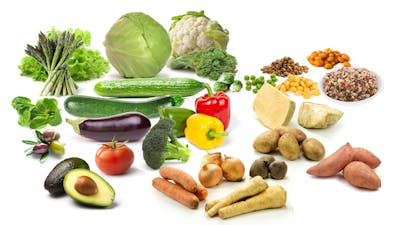 Vegetables
Vegetables 